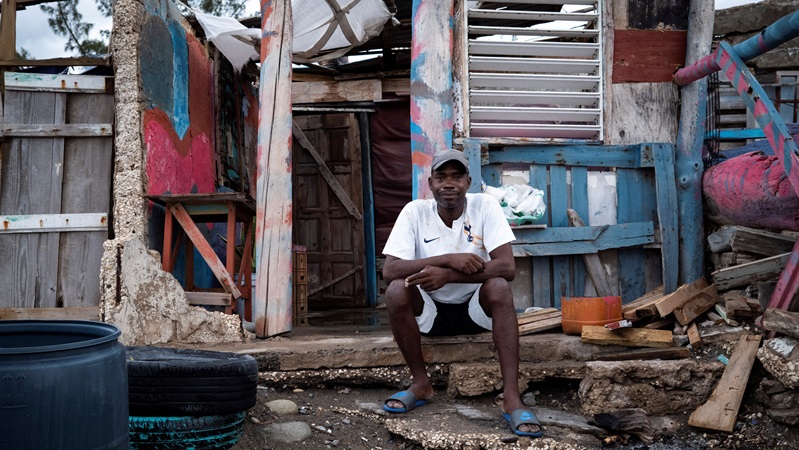Emily Wilkinson is Principal Research Fellow at ODI and Director of the Resilient and Sustainable Islands Initiative (RESI)
With winds of up to 240 km/h, Hurricane Beryl ripped through the Caribbean in July earlier this year, causing catastrophic damage to Grenada’s northern islands of Carriacou and Petite Martinique, as well as on several islands in Saint Vincent and the Grenadines.
Union Island saw 90% of houses severely damaged or destroyed and the island’s secondary school was turned into a shelter for the displaced. Many residents have been plunged into acute poverty, unable to reopen businesses or return to paid work.
Storms, floods and droughts are buffeting Small Island Developing States (SIDS) with increasing severity. After the immediate news reports die down however, populations of these places may face weeks, months or years living like this, deprived of essential needs whilst safe drinking water, electricity, permanent housing and other critical infrastructure is being restored.
Whole regions or islands and even people on previously good incomes end up tipped into crisis and deprived of essential material needs – what is known as multidimensional vulnerability in policy circles.
Sign up to get our weekly newsletter straight to your inbox, plus breaking news, investigations and extra bulletins from key events
A study by ODI, published today found that 20 million people, about one-third of those living in the world’s small island developing nations, are in this category – at severe risk of climate change-induced poverty that would deprive them of life’s essentials.
Our research also found that hidden brunt of climate-related disasters is borne more heavily by poorer households and individuals regardless of a nation’s development status. This reinforces the idea that we should be wary of assuming even small countries with high- or middle-income status can contend with these frequent shocks and often unsustainable public debt burden.
Whilst island nations face a multitude of challenges here, there is some hope that with a combination of money, and clever financial instruments borrowed from the insurance industry, we can make some progress in averting this poverty-climate trap that SIDS and other vulnerable countries face.
A little-known idea called a parametic trigger could hold the key. Parametric triggers are used by the insurance industry for floods, tropical cyclones and other hazards, where a threshold for compensation to be paid out is set in advance.
If the level of rainfall or wind speed goes beyond a trigger threshold, payment occurs without the need to go round assessing what the damage was. The loss and damage fund could use a similar mechanism.
COP16 confronts “huge” challenge of protecting 30% of world’s land and sea
We already know that climate funding can be painfully slow to arrive, as can debt relief. But parametric triggers are one way of speeding this up. To channel support to those who need it, the trigger mechanism needs to be tied to specific groups of the population – those that are poor or vulnerable to poverty in the places most likely to experience extreme weather.
Governments can use existing social welfare systems and beneficiary lists to identify these individuals in advance, so payments can be made directly to them, and not end up being sat in an institutional bank account for months or years, waiting to be disbursed.
Such an approach has been used to good effect by the World Food Programme, for example. In Guatemala, and more recently in the Sahel, pay-outs were triggered when climatic variables including low rainfall or reduced vegetation are confirmed by satellite data.
Of course, these mechanisms won’t work without increased funding and targeted support to vulnerable countries, as well as recognition that poverty is related to climate shocks and is multidimensional and not just determined by a measure of income. This is going to be an essential job for negotiators as we head into COP29 in Azerbaijan, and later when the Fund for Responding to Loss and Damage board meets in December.
For the loss and damage fund to work, we first need more cash – and quickly. Second, we need the fund to operate a fast finance mechanism like parametric triggers. And third we need the fund to target assistance at the most vulnerable nations and populations within them, for whom extreme weather events imperil their very existence.
